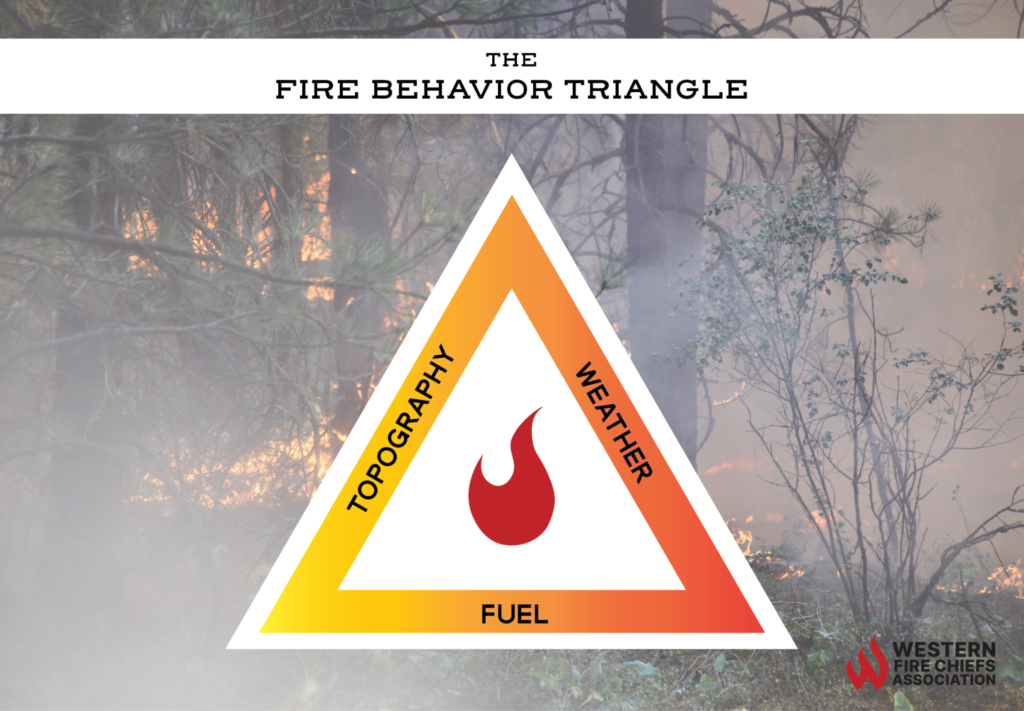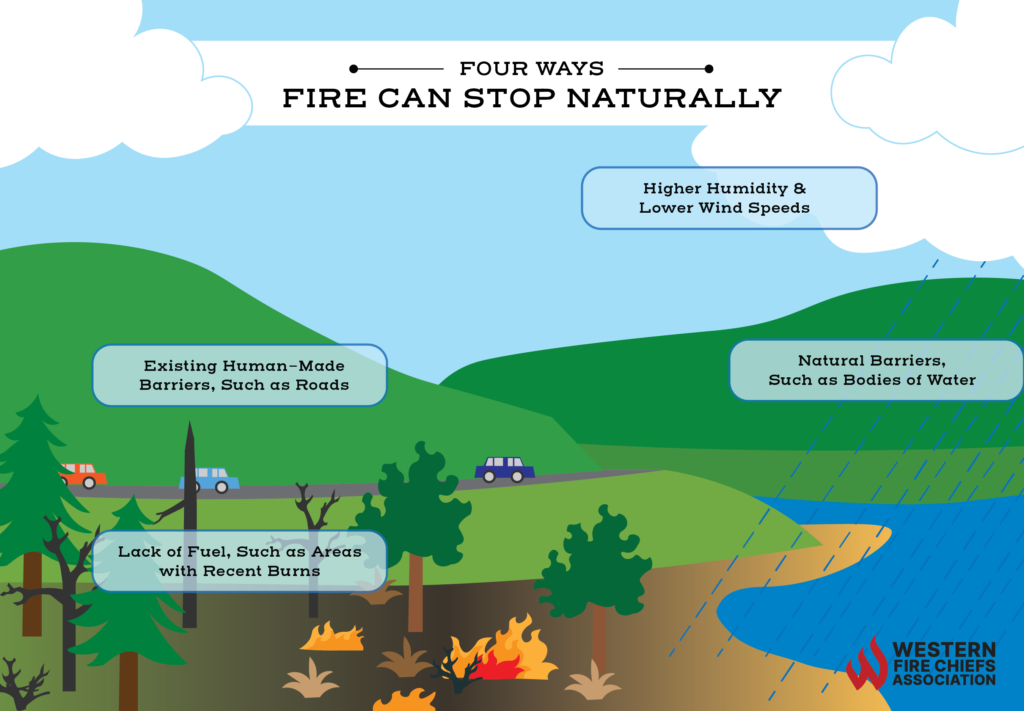Fire Pit Safety Tips
Stay safe around the campfire with tips from the Western Fire Chiefs Association. Learn essential precautions and practices for a worry-free outdoor campfire.
For wildfires to stop naturally, it needs to run out of heat, fuel or oxygen. Learn more with expert guidance from the Western Fire Chiefs Association (WFCA).
Published:September 20, 2022
Edited:March 4, 2024
For a wildfire to stop naturally, it needs to run out of heat, fuel or oxygen. Learn more with expert guidance from the Western Fire Chiefs Association (WFCA).

How do wildfires stop naturally? Wildfires are an essential part of many environments. They serve as nature’s way of clearing forest floors of dead vegetation. They return important nutrients back to the soil, enabling the growth of new, healthy plants, and they often die out naturally, without the need for human intervention.7
Numerous factors determine the course and behavior of a wildfire. Yet, all these factors can be summarized into three main categories that form what is known as the “fire behavior triangle”.1
The three sides of the triangle are fuel, weather, and topography or natural barriers. In order to put out a fire, fuel, heat, or oxygen must be removed. A good rain or a natural barrier can be enough for a wildfire to stop naturally. If this fails, a professional team of firefighters will step in to fight the fire, responding to many sides of the triangle simultaneously.1
Let’s take a closer look at common ways wildfires stop naturally:
A natural fire barrier is any area that obstructs the spread of wildfires due to the lack of flammable materials.5 In other words, wildfires will burn until they reach an area that is too damp or lacking fuel to allow the fire to grow. Natural fire barriers include wetlands, stream banks, floodplains, and other water bodies.8
Forest roads can also successfully create breaks for low-intensity ground fires.8 Other natural barriers include rock outcroppings and areas of bare ground.2
The four weather elements responsible for either the spread of fire or natural wildfire suppression include temperature, precipitation, relative humidity, and wind speed.4
Specifically, a significant decrease in wind speed and an increase in relative humidity are the two primary factors of how wildfires stop naturally. For example, a large crown fire could easily jump a highway or a wide river given strong wind and dry air. On the other hand, a ground fire burning in humid, still weather conditions could be naturally suppressed by encountering a tiny creek.2
While rain or snow can dampen a fire, precipitation rarely extinguishes it completely. Rain may help with drought, improving fire risk conditions. However, unless the precipitation is concentrated in a short period of time, it will evaporate quickly, making it impossible to suppress the fire.3

Fire fuel is any organic matter, living or dead, that can ignite and burn on the ground, inside the ground, or in the air. Light fuels, such as dead leaves, dry grass, and small trees, can ignite easily and cause the fire to spread quickly. Larger, slower-burning fuels include logs, stumps, and large trees.2
One way wildfires stop naturally is when burning fuels are separated from unburned flammable materials, causing the fire to run out of fuel eventually. For example, if fuels are scattered or separated by natural barriers like streams, rock, or areas of bare ground, the fire will be irregular and spread slowly.2
While wildfires may present a danger to nearby communities, it is important to understand that they play a crucial role in natural ecosystems. If a wildfire provides benefits like improved wildlife habitat or fuel reduction, it should not always be extinguished right away. Instead, monitoring and control of the fire’s spread until the wildfire stops naturally may be more beneficial.6
Stay safe around the campfire with tips from the Western Fire Chiefs Association. Learn essential precautions and practices for a worry-free outdoor campfire.
Discover essential firework safety tips to ensure a dazzling display without accidents. Learn how to celebrate responsibly with expert guidance from WFCA.
Explore the role of AI in wildfire prediction with guidance from the WFCA. Learn how advanced algorithms and data analytics enhance early detection and response.